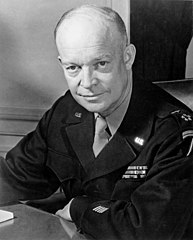
By Anthony J. Marsella, Ph.D
Homogenization
We live in a global era! This is a fact misunderstood, denied, distorted, ignored, or used for advantage by those with power and privilege. Our lives and fortunes are
interdependent. Single, isolated events, once unknown or disregarded, now generate and multiply ripples across the world. Causal explanations informed by ideologies seeking control and domination through uniformity can only result in conflict. Epic ideological struggles are at hand.
Amid our global era, dominated in thought and action by a few nations, we are witnessing a struggle between homogenization versus heterogeneity. Uniformity versus differences is appearing at all levels. It is a struggle for diversity versus imposed identity. While past decades were defined as struggles for world domination between communism and capitalism, our global era has given rise to ideological struggles across technological, political, religious, and economic efforts to establish a mass global society – a world order – promoting and sustained by “homogenization.”
For those seeking control, uniformity, and conformity, differences – diversity — in a mass society are seen as sources of distraction and disruption. Mass surveillance, monitoring, and archiving generate uniformity. Individual and group variations are being compelled to yield privacy, rights, and variations in life styles to pressures for an ordered and planned society – homogenized in all areas. Within this context, multiculturalism, as an ideology, is considered a foe.
Uniformity, Conformity, Compliance: The New Orthodoxy
Developments in information processing and technologies are exercising powerful influences on social, economic, political, and moral systems. They are enabling and facilitating forces in power to control and dominate variation — diversity — favoring efficiency and compliance with uniformity. Differences are targets for imposing order. They are considered sources of “chaos” or error to be subdued and integrated into a homogenized world in which “order” is the ethos. But chaos is the fruit of diversity – and diversity is the source and expression of life itself. Efforts after order – rooted in the assertion of control by those with power, wealth, and position – serve narrow interests. Ultimately, oppression emerges as arbiter.
The inability of those in positions of power to deal with challenges to their preferred ideology of “homogeneity” is the major struggle of our times – an ideological struggle being imposed upon the world of variation, in favor of an ideology of uniformity unsuited for our global era. The myriad of differences in thought, appearance, and ways-of-life in varied expressions face extinction from the massive power invested in monolithic and monopolistic proportions in different industries and services including Big Ag, Big Education, Big Energy, Big Government, Big Medicine, Big Phar, and Big Military. There is an inherent ideology in all these “Bigs” – an ideology favoring dominance and control. There is no room for variation from the perspective of the Bigs!
But don’t believe them! Read about the multicultural alternative in my next post here on engagingpeace.com.
Anthony J. Marsella, Ph.D., is Professor Emeritus, University of Hawaii, Manoa Campus, Honolulu, Hawaii, 96822. He is the author and editor of twenty books, and more than 300 publications noted for challenging the ethnocentricity and biases of Western psychology and psychiatry, and for advocating peace and social justice.



